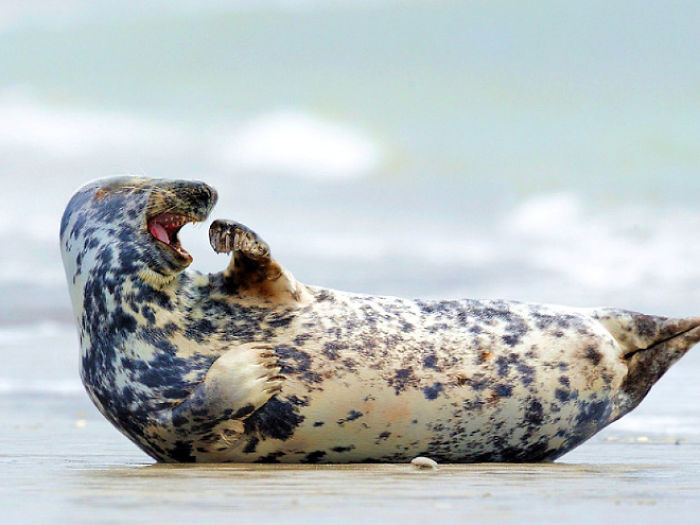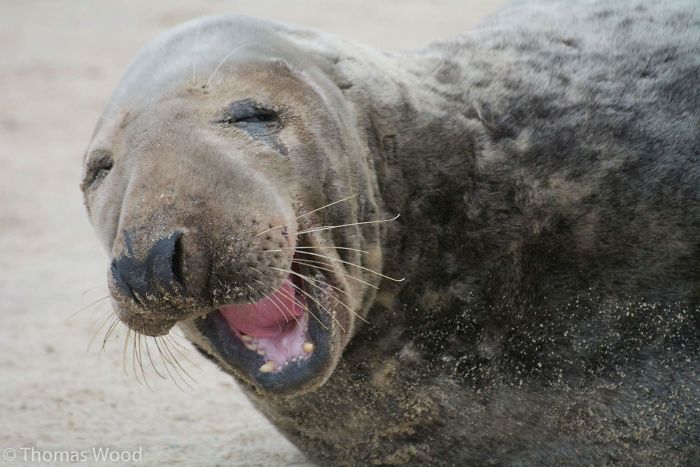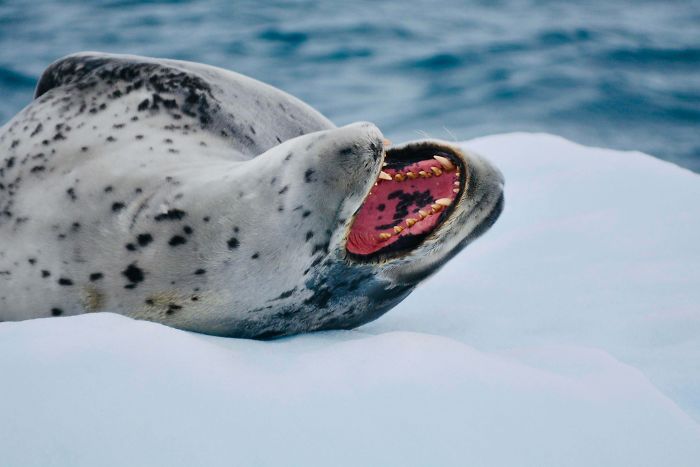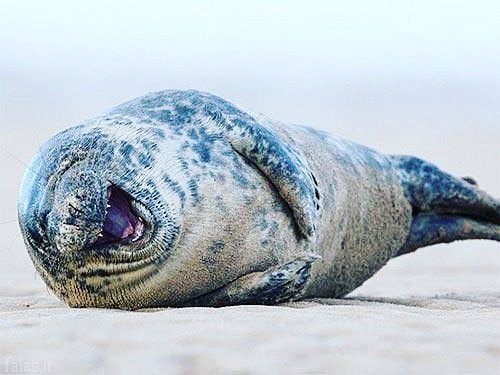There are 33 species of pinnipeds living in the world today, most of which are known as seals. They range greatly in size, from the gargantuan southern elephant seal, which can weigh more than a pickup truck, to the relatively slender, 100-pound Baikal seal.
But while there are many differences among the species, they share a few similarities, too. For example, all seals have feet shaped like fins. All of them are considered semi-aquatic marine mammals. And all of them know how to have fun.
In fact, they're goofing around so often, photographers often catch them literally rolling in laughter as if they've just overheard the best joke ever. Don't believe me? Continue scrolling and take a look for yourself. Just be careful, their laughter is so contagious, you might catch it as well!
This post may include affiliate links.
Is this seal a navy SEAL? Cause he bombed that photo harder than ISIS
To find out more about these fun animals, Bored Panda contacted Leonie Sophia van den Hoek, a scientific and fantasy writer who's a marine biologist and scientific researcher with a deep passion for anything related to the sea, oceans, coral, and mammals.
"The diversity of seals is greatest in seasonally ice-covered seas where the risk of predation is minimized," Leonie explained. "Simply said, they like cold-water environments. A majority of them live in the Arctic and Antarctic waters. Harbor, ringed, ribbon, spotted, and bearded seals, as well as northern fur seals, live in the Arctic region."
When asked about what she thinks really defines these exceptional creatures, the scientist returned to their name. "'Pinnipeds' comes from the Latin 'pinna' and 'pedis,' meaning 'feather-footed' or 'fin-footed,' referring to the paddle-like fore and hind limbs. There are many different types of seals, like seals with and without ears, fur seals, even harbor seals... but what they all have in common is their fin or feather feet that they depend on."
Also, Leonie directed our attention to the fact that pinnipeds are considered semi-aquatic marine mammals and they must spend some time on land or sea ice.
When it comes to the seals' laughter, however, Leonie was absolutely ruthless. "I really don't want to destroy the fun of seeing smiling seals, but there is no scientific proof that they are actually smiling. The ends of most seals' mouths are permanently curled upward. This can create the illusion of a smile or grin and it looks very adorable... but the truth is that they are opening their mouth for most likely a yawn."
"Watching seals is a lot of fun and very interesting," the scientist added. "Seals may look cute, like fin-footed puppies, but you should not approach them. Seals have a powerful bite which could put even a pit bull to shame. So my advice is to take photos of them laughing from a distance and when you see a seal puppy alone on the shore, don’t approach him. Sometimes the parent goes into the water to hunt and even though the baby might look lonely or unhealthy, the best thing to do is to call a nearby seal rescue center."
"Oh the shark bites......with his teeth dear.....and leaves them.....pearly white...."
Meanwhile, there’s lots and lots of cruel slaughter of seals going on in CANADA : an extremely hippocratic nation. Watch this vid! https://www.youtube.com/watch?v=3pvWbwYxrkw
Meanwhile, there’s lots and lots of cruel slaughter of seals going on in CANADA : an extremely hippocratic nation. Watch this vid! https://www.youtube.com/watch?v=3pvWbwYxrkw

 Dark Mode
Dark Mode 

 No fees, cancel anytime
No fees, cancel anytime 






















































































































